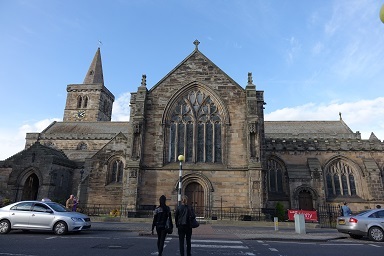Holy Trinity Church
Holy Trinity Church
Holy Trinity Church was for many years the main place of worship for St Andrews' ordinary residents. It was built in the early fifteenth century, near the residential and trading centre of St Andrews. During the late Middle Ages Holy Trinity was regarded as one of Scotland's leading parish churches, and was served by about thirty priests. The interior was richly decorated with stained glass, luxurious fabrics, and statues imported from Flanders. In 1547 Holy Trinity was the scene of the first public sermon of the famous Reformer, John Knox. In 1559 Knox again preached in Holy Trinity, commanding the people of St Andrews to purge the city of "monuments of idolatry". Inspired by Knox's words, the local population rejected Catholicism, tore down statues and altars, and sacked St Andrews Cathedral. At the start of the twentieth century Holy Trinity was extensively remodelled. Today only the tower and some pillars inside the church survive from the Middle Ages.
Street View
Additional Information
Location: North side of South Street. Date Built: Fifteenth to twentieth centuries.
Archaeological excavations have found evidence suggesting that buildings were demolished to make way for the construction of Holy Trinity Church.
The land for Holy Trinity Church was given by a local nobleman, Sir William Lindsay of the Byres. In exchange for his gift Sir William requested that part of the church be put aside as a chapel in his memory.
Many of the different trades in St Andrews (such as the bakers or the metal workers) had altars in Holy Trinity Church. When someone was apprenticed to a particular trade they made a gift (normally money and wax for candles) to their craft's altar. Fines from tradesmen who had committed offences were also often paid to craft altars.
Holy Trinity Church had a strong musical tradition. Before the Reformation all of the priests had to be able to sing.
The space now covered by Church Square was once part of Holy Trinity's graveyard. A number of medieval skeletons have been excavated from this area.
Holy Trinity Church collected rents from the majority of the houses in St Andrews. The documents recording these rents mean that it is possible to reconstruct the layout (and ownership) of large areas of sixteenth century St Andrews.
